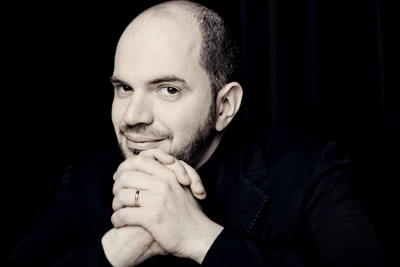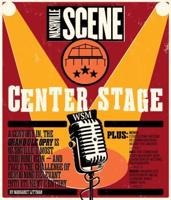
Kirill Gerstein
Kenneth Schermerhorn, the Nashville Symphony Orchestra’s late, great music director, spent his formative years studying with Leonard Bernstein. So it was a thrill to hear Bernstein’s most daring symphony performed on Thursday night at the Schermerhorn Symphony Center.
It was perhaps even more thrilling to hear pianist Kirill Gerstein tackle the demanding solo passages in Bernstein’s Symphony No. 2 The Age of Anxiety. Inspired by W.H. Auden’s poem of the same name, Bernstein’s The Age of Anxiety is actually a thinly disguised piano concerto that makes extraordinary demands on the soloist. The work is alternately poetic, fiery and jazzy, and Gerstein did justice to every mood, every style.
He performed the symphony’s opening part with just the right mix of lyricism and agitation, and he played the second part’s “Dirge” with so much pathos that I thought I was listening to Mahler. An elegant classical player, Gerstein is also a formidable jazz pianist. So it was no surprise that he was at his best in the “Masque,” which he played as a kind of hard-bopping Thelonious Monk piece. Guest conductor Lawrence Foster and the NSO provided Gerstein with beautifully nuanced accompaniment.
The Age of Anxiety is seldom performed, and its music is unfamiliar to most audiences. That probably explains why Gerstein received polite applause, but no curtain calls, for his fabulous performance. Too bad, because he might have given us an equally fabulous encore.
Foster closed Thursday’s concert with one of the orchestral repertoire’s perennial blockbusters, Dvorak’s Symphony No. 9 in E minor From the New World. Dvorak composed this work in America in the early 1890s, and he claimed that “anyone with a nose must smell America in this symphony.” True, one detects hints of Native American and African-American music in the score. But one hears echoes of Beethoven’s Fifth and Ninth symphonies as well. Dvorak may have made his symphony in America, but his heart remained in Central Europe.
Be that as it may, Foster and the NSO made the symphony their own. They played fast movements with sweep and drama, and they performed the drop-dead gorgeous melodies of the slow movement with unfailing sensitivity. Thursday’s audience gave that rendition the ovation it justly deserved.
The program repeats at 8 p.m. Friday and Saturday, Feb. 6-7, at the Schermerhorn.





